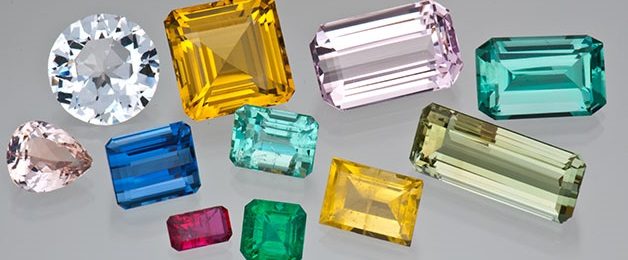In the 17th century, the world of jewellery experienced an important change. Although the goldsmith’s craft had advanced in the Renaissance thanks to great artists such as Cellini, birds, flowers, plants, garlands and loops were only found in jewellery since the 17th century. It was only during the Baroque period that human figures and symmetrical designs slowly disappeared from the jewellery.

Rough Citrine Gemstone
Louis XIV. – A king who loved jewellery
During the reign of Louis XIV in France, gold-smithing played a very important role. Louis XIV was a passionate gemstone lover. Every diplomatic meeting and every public appearance of the monarch involved a huge amount of wardrobe and make-up. These ornaments which the sun-king wore on such occasions, often weighed more than a kilo. Can you imagine making graceful movements while wearing jewellery over a kilo ?! A truly majestic achievement!
During this time, the cutting of gemstones was considerably further developed and almost perfected. This meant more sparkle and brilliance for every gem! The frames were always more complex.

Lemon Citrine Loose Gemstones
Louis XIV’s love for jewellery was increasingly fuelled by the competition between goldsmiths. New models and forms were needed to decorate the king; each one tried to surpass the other with his creations. The most famous gold smith of those days was undoubtedly Gilles Légeré, the royal goldsmith of the monarch. He has anchored the style of the “Rococós” in jewellery, even today his drafts are still admired. During this time however, it was a real challenge for goldsmiths to realise and implement their designs.
The sun in Versailles
All the members of the court of Versailles closely followed the new jewellery trends. In the midst of the many counts, dukes, marquises and barons, one had to stand out somehow. The best way was to wear jewellery adorned with coloured gemstones of a high carat weight and lots of sparkle.

Louis XIV was known throughout Europe as the “sun king”. To attract the attention of the monarch, many noblemen (and especially many women of the nobility!) asked for jewellery from their goldsmiths, on which the sun was depicted. In the beginning, it was mainly engraved suns, but as time passed the designs became more and more elaborate. Gemstones were the next step! And so a yellow gem celebrated a peak in popularity; Citrine! It is a gemstone that displays wonderful yellow tones. Moreover, it has a very beautiful clarity, good brilliance and is available in considerable sizes. The perfect gem to represent the sun, and it was usually accompanied by other smaller yellow gemstones. So in the 17th century, Versailles was almost overwhelmed with supporters, diadems, earrings, rings, bracelets, watches and other jewellery, on which Citrines could be seen depicting the sun.
Yellow, the colour of joy
It is said that yellow is the colour of happiness. It is associated with the light of the sun, which creates well-being and good feelings within us. Not for nothing, Citrine also known as a gem of pleasure. The colour of Mandarin Citrine differs significantly from the typical gold yellow colour of Citrine and displays a more orange hue. Lemon Citrine shows a greenish note, and Madeira Citrine which displays a red tone, is named after the wine of the same name, which has a similar hue. In all its variations, Citrine is a beautiful gem.

Mandarin Citrine Loose Gems
However, there are other yellow gemstones: Sapphire, for example, is known for its extraordinary brilliance; Heliodorus, from the Beryl family; Imperial Topaz with its royal orange shades and also Sunset Amethyst, relatively new on the market of gemstones and ever since “a must” from the Rocks & Co. collection. Sunset Amethyst is golden yellow and shines, so to speak, from the inside in a seductive way. Undoubtedly, yellow is present in all trends and tendencies. The colour of happiness is timeless!
Discover an array of Citrine and other yellow gemstones in our online shop >






